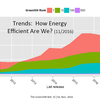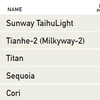Hewlett Packard Enterprise has demonstrated a prototype of The Machine, the companys much talked about R&D project to develop a new computer architecture for the big data age. But rather than developing a reference platform for future systems, the effort has been refocused to develop a set of technologies that will be scatteredacross HPEs product portfolio.
A couple of weeks ago, at SC16 in Salt Lake City, analyst firm IDC presented its bi-annual review of the latest trends in the HPC market. Overall, IDC is projecting annual growth of about 6 to 7 percent in 2016, which would put total HPC revenue at around $24.6 billion dollars for the year.
The Tokyo-based National Instituteof Advanced Industrial Science and Technology (AIST) is taking bids for a new supercomputer that will deliver more than 130 half precision petaflops when completed in late 2017. The system, known as the AI Bridging Cloud Infrastructure (ABCI), is mainly being built for artificial intelligence developers and providers, and will be made available as a cloud resource to researchers and commercial organizations.
At Intels recent AI Day, the chipmaker previewed a series of future products that it intends to use to unseat GPUs as the de facto standard for machine learning. The one-day event was Intels most assertive pronouncement of its intentions to become a major player in the artificial intelligence market.
The new Green500 list of the most energy-efficient supercomputers demonstrates some significant progress from last year. Thanks to the new manycore processors from Intel and NVIDIA that are starting to penetrate the top systems, performance per watt numbers are on the rise.
At SC16, during a birds-of-a-feather (BoF) session held Wednesday afternoon, a room full of supercomputing enthusiasts listened attentively to the latest developments at the Exascale Computing Project (ECP). Department of Energy (DOE) representatives were on hand to deliver updates on the software and hardware efforts that the project is undertaking.
Although Intel had no blockbuster reveals at this years supercomputing conference (SC16), they did issue a flurry of announcements to remind everyone that they still dominate much of the componentry in the HPC industry. And if anything, they are looking to extend their hegemony, as well as move into new areas.
Just as the choice of processors architectures in supercomputing is expanding with GPUs, FPGAs, ARM and Power, memory is beginning to diversify as well. Novel technologies like 3D XPoint, resistive RAM/memristors, and 3D memory stacks are already starting to work their way into the hands of HPC users. At SC16 this week in Salt Lake City, one of the Friday panels, The Future of Memory Technology for Exascale and Beyond IV, will delve into this subject more deeply.
FRANKFURT, Germany; BERKELEY, Calif.; and KNOXVILLE, Tenn.— The 48th edition of the TOP500 list saw China and United States pacing each other for supercomputing supremacy. Both nations now claim 171 systems apiece in the latest rankings, accounting for two-thirds of the list. However, China has maintained its dominance at the top of the list with the same number 1 and 2 systems from six months ago: Sunway TaihuLight, at 93 petaflops, and Tianhe-2, at 34 petaflops. This latest edition of the TOP500 was announced Monday, November 14, at the SC16 conference in Salt Lake City, Utah.
The rollout of200 Gbps networking began in earnest this week with Mellanoxs unveiling of its initial HDR InfiniBand portfolio of Quantum switches, ConnectX-6 adapters, and LinkX cables. Although none of the products will be available until 2017, the imminent move to 200 Gbps is set to leapfrog the competition, in particular, Intel, with its current 100 Gbps Omni-Path technology.










